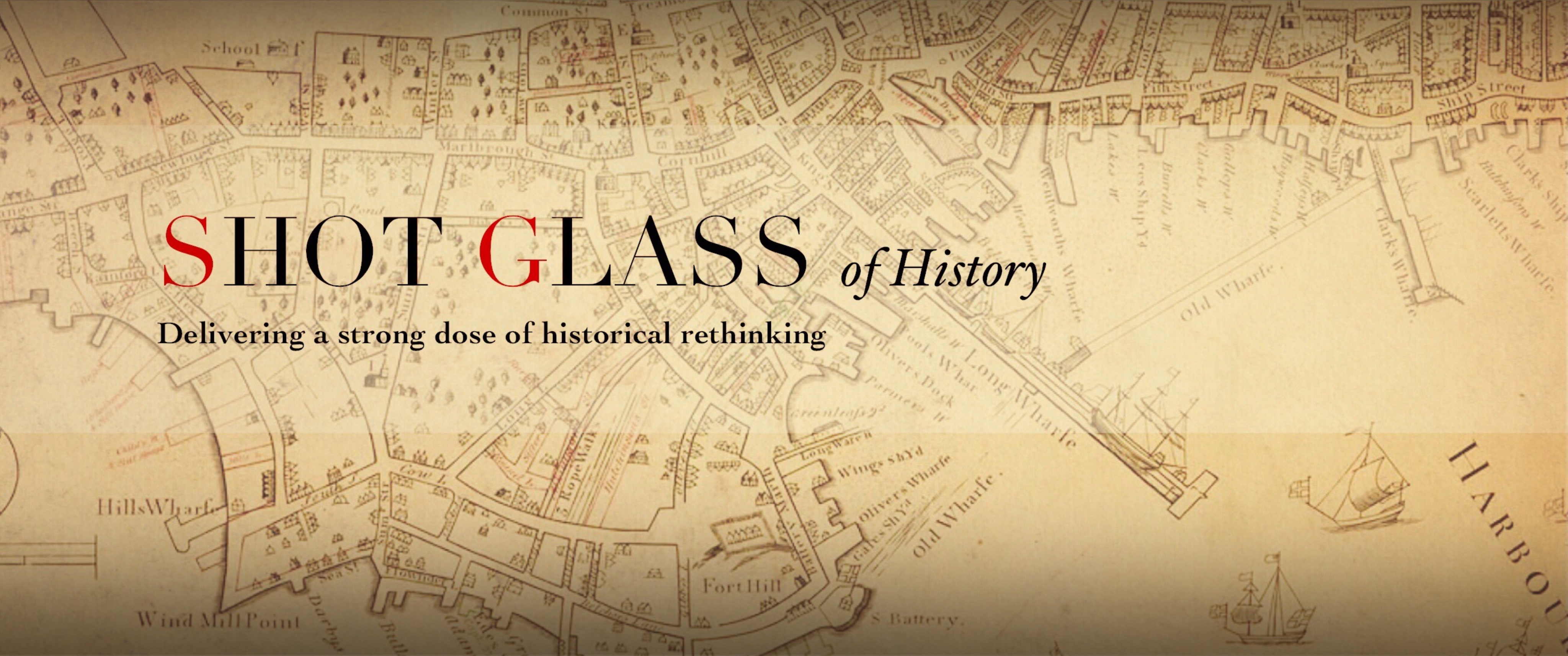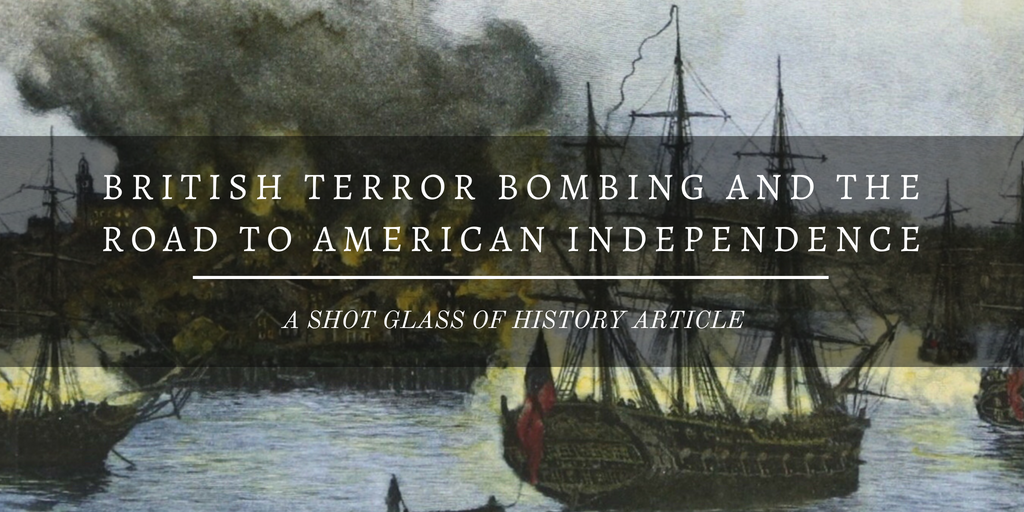Scars of Independence: America’s Violent Birth
BY HOLGER HOOCK
BROADWAY BOOKS, 576 PAGES, $13.89
–
It was a deceptively lovely Autumn day in the town of Falmouth, Massachusetts, but the residents desperately trying to evacuate had little time to appreciate it’s beauty. At 9:40 AM Captain Henry Mowat, commander of the Royal naval squadron anchored offshore, ordered his vessels to fire upon the defenseless town, raining down what one eyewitness described in awe as “a shower of cannon-balls, carcasses, bombs, live shells, grape-shot, and even bullets from small-arms” (Hoock, Scars of Independence, 86). The bombing targeted the most compact portions of the town in an attempt to demolish as many buildings as possible. Homes and shops that failed to catch fire from the naval bombardment were set alight by a landing party of British soldiers. Several hours later, his work of destruction complete, Mowat sailed on, intent on targeting further coastal towns. Difficulties with his ships, however, forced Mowat to abandon his plan and return to Boston, fortuitously ending his plan to terror bomb the New England coast. This and similar acts of wanton violence waged by the British upon Massachusetts, which was at the time still considered by both sides a British colony, had a powerful effect in shaping the Patriot movement and pushing the colonies towards independence. However, as Holger Hoock recounts in his book, Scars of Independence, we tend to only remember the colonies’ ideological motivations for seceding from their mother country, rather than their specific complaints of British brutality.
In October of 1775 when the bombing of Falmouth occurred, the American colonies were still very much part of Britain. Fighting had broken out four months earlier in June, and it had been mostly reserved to areas around Boston. Throughout this time the Continental Congress had actively pursued negotiations with their king as well the British Parliament, but with little effect. In July the colonial delegates had sent the king a petition, seeking a ceasefire, but George III refused to read the document, and in August he declared the colonies to be in open rebellion. All who had participated in the resistance to the king’s minsters in America were now declared guilty of treason, and deserving a traitor’s death. The pronouncement was devastating to the members of the Continental Congress who had held out hope that a peaceful resolution could still be reached. But there was a huge population of Loyalists in America that did not fall under the king’s condemnation, and it was yet to be seen whether the British government would pursue a more reconciliatory path towards pacification, or drag the whole of the colonies into a destructive war of subjugation as had been done in Scotland with the Stuart uprising of 1745.
Britain’s decision came two months later. The British Admiralty ordered Vice Admiral Samuel Graves to send his ships to the most notorious towns in Massachusetts, the seedbed of colonial resistance, and order them to cease their privateering and smuggling. If the towns refused to comply, the Royal Navy was then to “proceed, by the most vigorous efforts, against said Town, as in open Rebellion against the King” (p. 85). Graves gave his first command to Captain Henry Mowat, who took five ships and headed for the New England port town of Falmouth.
A successful lumber-trade port with a population of some 2,000, Falmouth had a deep and broad harbor that would allow his ships to shell the two- and three-story wooden buildings along the hillside at close range. The town also had a history of militant rebelliousness dating back to the mid-1760s, when the locals had burned stamped papers, attacked customs officials, and boycotted East India tea. Rebels there had even briefly held Mowat captive in spring 1775. For Mowat, strategic advantage and an opportunity for personal revenge coincided perfectly at Falmouth. (p. 86)
Mowat anchored his ships offshore and requested that the townspeople gather in the meetinghouse to hear an announcement. A Royal officer then read the proclamation, declaring the inhabitants “guilty of the most unpardonable Rebellion,” and requiring a most “just Punishment” (p. 86). The population would be given until the next morning to evacuate the city before Mowat’s fleet would then destroy it.
An eyewitness recounted that a “frightful consternation ran through the assembly, every heart was seized with terror, every countenance changed color, and a profound silence ensued for several moments” (p. 86). The residents frantically attempted to gather what they could of their possessions through the night, and at 9:40 the next morning, even though the town was still in the process of being evacuated, Mowat ordered his ships to fire.
The bombardment did not distinguish between Loyalist and Patriot homes, and indiscriminately rained hell down upon the men, women, and children that remained.
During nine hours of pandemonium, more than 3,000 projectiles hit Falmouth, one every eleven seconds. Eleven ships were destroyed; Mowat captured an additional four in the harbor. The day after, the log of the attacking ship Canceax noted that fires continued to burn in the town. When it was all over, roughly three-quarters of the buildings lay in ashes—including the Episcopal church, the new courthouse, the old meetinghouse, the distillery, most wharves, almost every store—and some 160 families would begin the winter without shelter. (p. 87)
Mowat was so intent on thoroughly destroying the city that buildings that didn’t catch fire from the bombardment were set alight by landing parties. With Falmouth now in ruins, Mowat sailed his fleet on up the coast to continue his raid of terror, but difficulties with the ships forced him to return to Boston, where he then remained through the winter.
News of the destruction of Falmouth spread panic up and down the Atlantic Coast as residents fearfully waited for further British Naval raids, while throughout the colonies the attack spread a sense of betrayal and outrage at their king and the British government. For awhile now the colonies had been feeling estranged from their mother country, and the violent destruction of Falmouth only increased their growing self-identification as Americans under attack from a brutal foreign power.
The Continental Congress in Philadelphia received a flurry of letters angrily denouncing the burning of Falmouth as a declaration of war by “British barbarians” (p. 88). “[T]he unheard of cruelties of the enemy have so effectually united us,” wrote one man, “that I believe there are not four persons now in [P]ortsmouth who do not justify the measures pursuing in opposition to the Tyranny of Great Britain” (p. 90). General Washington likewise described it as an “Outrage exceeding in Barbarity & Cruelty every hostile Act practised among civilized Nations” (p. 90).
Many in Britain saw the burning of Falmouth as a shortsighted attempt by the government to strong-arm the colonies, which, as one newspaper claimed, would “produce nothing but the bitter Fruit of Ruin, Misery, and Devastation” (p. 91). Even members of the British Parliament denounced the attack. Edmund Burke had already spoken out against the use of what was then called desolation warfare: “punitive raids against vulnerable military targets, civilians, and property that were designed to shock the enemy into compliance” (p. 90). Burke warned that desolation warfare could only polarize the conflict, forcing otherwise loyal and neutral colonists to either flee or take a desperate stance against the British military, turning the conflict into a long war of attrition. And that is exactly what happened.
Most of the Loyalist refugees from the Falmouth bombardment fled for British occupied Boston or Halifax, while rebellion escalated among those that remained. In the face of continued colonial resistance, Admiral Graves declared that such “farther Violences” would need to “be severely dealt with” (p. 91). And in January the British navy conducted a similar bombardment upon the largest American town: Norfolk, Virginia. The results were the same. “Imperial violence, far from terrifying rebellious colonials into submission, seemed instead to fan the flames into insurrection” (p. 90).
While up to this point probably the vast majority of the American colonists had wanted to remain Englishmen, Britain’s brutal response had transformed the conflict. A full nine months before independence was actually declared, the New-England Chronicle wrote that the burning of Falmouth had proven that Britain was “fully determined with fire and sword, to butcher and destroy, beggar and enslave the whole American people. Therefore we expect soon to break off all kinds of connection with Britain, and form into a Grand Republic of the American Colonies” (p. 88). But even then the colonists were reticent to cut their ties with the mother country. And it was not until July of 1776, in the face of the largest invasion force to ever reach American shores, that the united colonies finally, officially declared independence from Britain.
While we often tend to focus on the political ideology that drove the colonies to separate from the mother country, the Declaration of Independence gave a detailed list of King George III’s violent political crimes as the justification for their independence, and the need for armed resistance to achieve it. On this list included the indictment that the king “has plundered our seas, ravaged our Coasts, burnt our towns, and destroyed the lives of our people.” As Hoock writes:
With his aggressive, unethical conduct, Congress was saying, the king had removed his colonial children “out of his Protection.” George III had “effectively placed the colonies ‘beyond the line’ of civilized practice in warfare” by introducing illegitimate forms of violence. By using this kind of language, the Declaration’s authors were speaking to a wider international audience. When the Patriots’ final accusation now concluded, it had become clear that such a “Prince whose character is thus marked by every act which may define a Tyrant, is unfit to be the ruler of a free people.” (p. 106)


